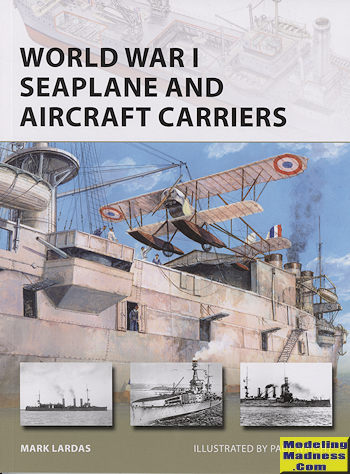 When
one thinks of naval power in WWI, aircraft carriers are not generally near the
top of the list. Aviation was a very new thing, but the British and other
fighting powers were not ignorant of the capabilities of this nascent addition
to their military forces. Airplanes were vastly superior to pretty much
everything in terms of reconnaissance and were quite useful to navies in terms
of locating other ships.
When
one thinks of naval power in WWI, aircraft carriers are not generally near the
top of the list. Aviation was a very new thing, but the British and other
fighting powers were not ignorant of the capabilities of this nascent addition
to their military forces. Airplanes were vastly superior to pretty much
everything in terms of reconnaissance and were quite useful to navies in terms
of locating other ships.
As the war expanded, it was obvious that there was a need for a
specialized ship to carry aircraft. Often capital ships had the ability to carry
aircraft, but they were really just in the way when shells started to fall,
especially as aviation fuel was not a good thing to have. So if they still had
aircraft, on board, the plan was to shove them and all their fuel over the side
as battle drew near.
Fortunately, it was decided to build or convert ships just for the
purpose of carrying aircraft. Initially these were sea planes of some sort;
mostly floatplanes. Indeed, it was floatplanes that performed the first aviation
attack against ships and dropped the first aerial torpedo against a ship. The
two nations who saw the greatest benefit from these vessels were the British and
the Russians, though the Japanese were probably the first to use them in combat.
It was British innovation that designed ships to carry fighters, though
getting them back safely was usually not a main concern. They built the first
aircraft carrier, the HMS Furious, which had a landing and take off deck, but
also had the main ship's super structure and funnel in the middle of the ship,
necessitating the carful movement of aircraft to the take off ramp. Later, the
HMS Hermes was built as the first flush deck carrier that we all recognize even
today.
The author covers the full development as well as the usual trials and
errors of getting functional ships to where they were useful. The numbers of
converted ships is significantly greater than those purpose built, yet they all
served a purpose and were, to some degree or another, useful. The book has
superb period photos of these interesting ships and illustrator Paul Wright adds
even more great images (such as the cover) to enhance the book. I found it a
great read as in all the New Vanguard series and it often whets one's desire to
learn more.
November 2016
Copyright ModelingMadness.com. All rights reserved.
For more on the complete line of Osprey books, visit
http://www.ospreypublishing.com
If you would like your product reviewed fairly and
fairly quickly, please
contact
the editor or see other details in the
Note to
Contributors.
 When
one thinks of naval power in WWI, aircraft carriers are not generally near the
top of the list. Aviation was a very new thing, but the British and other
fighting powers were not ignorant of the capabilities of this nascent addition
to their military forces. Airplanes were vastly superior to pretty much
everything in terms of reconnaissance and were quite useful to navies in terms
of locating other ships.
When
one thinks of naval power in WWI, aircraft carriers are not generally near the
top of the list. Aviation was a very new thing, but the British and other
fighting powers were not ignorant of the capabilities of this nascent addition
to their military forces. Airplanes were vastly superior to pretty much
everything in terms of reconnaissance and were quite useful to navies in terms
of locating other ships.